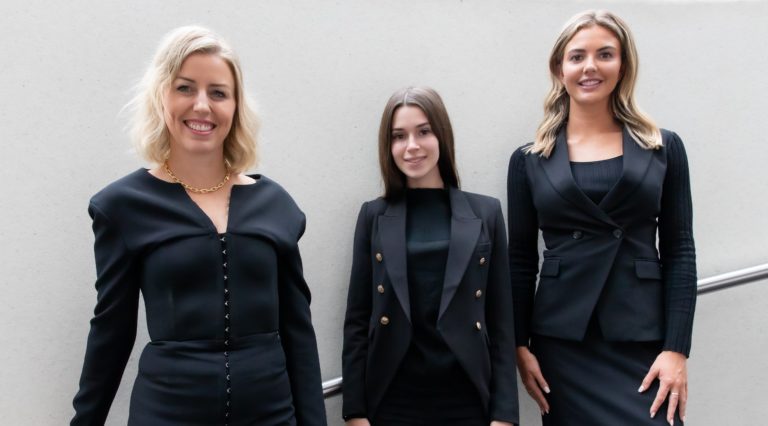Introduction

International Women’s Day 2022 falls on 8th March, with an overarching focus on breaking down gender biases that cause gender inequality in our societies #BreaktheBias. In the lead up to International Women’s Day, we wanted the voices of Our People to join the conversation; both men and women.
In this article we sat down with Sinead Waldron, Director of Human Resources, to talk about her encounters with, and ways of overcoming gender bias.
What is CCi doing to tackle gender bias, from entry-level roles to leadership table?
It takes a conscious and collective effort advocated by leadership to create a culture that values uniqueness, invites diverse groups of people to take part in company life and feel a sense of belonging and acceptance.
We have experienced rapid business growth which has been both organic and through strategic acquisitions. This expansion has changed our people landscape resulting in newly formed teams of talented and diverse people that span different geographies and genders.
I am privileged to work alongside a supportive and progressive leadership team who understand that the values and requirements set out in our Equity, Diversity, and Inclusion (ED&I) policy is not the sole task of HR departments but the responsibility of the entire organisation
Our people are the architects of our culture. As leaders our executive team establishes and upholds the core values of the company and asks how we can make a meaningful difference to the lives and careers of everyone at CCi. Simply put, breaking down gender bias is absolutely the right thing to do.
We begin our ED&I journey with clear intent to provide a place for all people to thrive. We appreciate that working with a diverse team of people, where all voices are included, enables a better working environment for everyone. Creating a space where different world views and experiences are voiced and appreciated fosters innovation for our business and our clients.
Our starting point is to create a diversity scorecard for the whole business to enable all to see where we are now and to identify opportunities to improve any gap areas. Part of our journey is to form a dedicated committee to tackle internal improvement projects that boost inclusion throughout our teams. As leaders, we will advocate discussions that spur positive action throughout our teams. We look forward to setting our ED&I strategy to ensure that we keep pushing forward.
What can women do to combat gender bias?
It is about legacy. We all have the responsibility to equip the next generation of women to reach farther and climb higher.
I talk to other women about examples of strength and how varied leadership can look. A leader offers inspiration, empathy, drive, empowerment, motivation and the ability to bring people together, and given we are all different, why should we seek a universal “leadership mould”?
By encouraging women to take professional risks, to be independent, to be confident in their abilities and to create opportunity, I hope the next generation will achieve more. By offering meaningful sponsorship and mentorship, and an empathetic ear to women’s stories and experiences, we can help overcome gender bias.
My advice to women is to speak up sooner and to back yourself, because what is the worst that can happen? Aptitude is especially important to advancing your career, but so is opportunity.

What’s the most common bias you have encountered? What is your advice on dealing with it?
One common bias I observe, is women being interrupted more frequently than men in meetings or conversations. As we continue to strengthen a collaborative culture within our physical and digital workspaces, well-mannered “interruptions” can be valuable to the conversation because they offer questions and insights.
However, women experience interruptions that are born out of perceived (or unconscious) bias. Common stereotypes are that men communicate to achieve power, whilst women communicate to achieve connection. Typically, I see women avoid the stereotype of becoming emotional; often they do not call out this disruptive behaviour.
This type of bias can be tackled at different levels. Firstly, from a personal level by politely calling out the behaviour during a meeting or pulling the person aside after the event. From a corporate level, when leaders chair meetings they can set their expectations of the group to allow everyone to have a voice, and to hold everyone to account accordingly.
We need to continue to create an inclusive and collaborative physical and digital work culture wherein everyone feels they have a voice. If you see a colleague being interrupted, please support them by creating space for them; simply stating that you were interested in what they are saying has a profound effect.
What can we all do to improve the situation in the workplace and our personal lives?
Our starting point is self-awareness
We use heuristics to simplify our encounters with people and the world we live within. Our biases are ingrained from experiences and how we are raised. We can adapt and ultimately improve how we include others by shining the light on our presuppositions, behaviours, and language choice. We need to reflect on our influence on others and what we can personally change. We need to be open to feedback.
In order to learn more about any personal biases there are free tests available at the Diversity Australia website: https://www.diversityaustralia.com.au/services/test-your-own-unconscious-bias/
If you recognise cognitive biases in your colleagues, please think about how you can present your views respectfully and appropriately; everyone is on their own journey of understanding and more often than not they will appreciate feedback when given in an appropriate setting. Please tune in to what is said and how it can negatively affect others.


